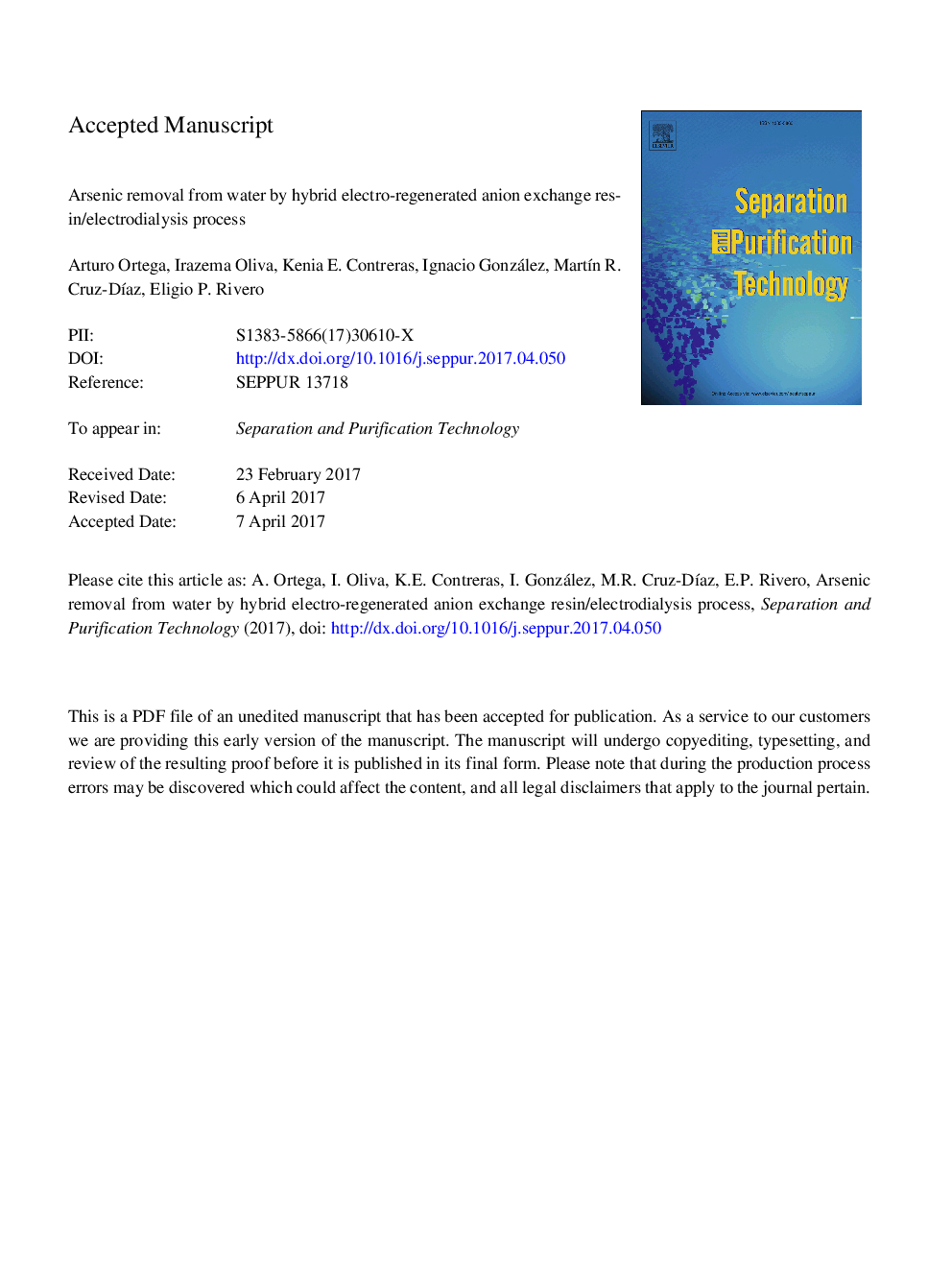| Article ID | Journal | Published Year | Pages | File Type |
|---|---|---|---|---|
| 4989762 | Separation and Purification Technology | 2017 | 39 Pages |
Abstract
One of the major public health concerns worldwide is arsenic presence in the water intended for human consumption in different countries. This paper proposes the use of the hybrid ion exchange/electrodialysis (IXED) process for arsenic removal from water. Its objective is to lower the concentration of dilute solutions of As(V) ions to values below the maximum limit (10 µg Lâ1 As) recommended by the World Health Organization. To prove this method, a 5-compartment cell was used: a central compartment filled with anion exchange resin and delimited by anion exchange membranes, two adjacent compartments with cationic membranes on the ends and two rinse compartments, one at each electrode. Ion exchange/electrodialysis process was performed as a batch wise operation by recirculating arsenic solutions through the central compartment and the two adjacent compartments. The As(V) ions in the solution are exchanged by OHâ in the resin which is regenerated with OHâ ions produced by water dissociation at the membrane-electrolyte interface, according to changes in pH, conductivity and As concentration in each compartment. The obtained results show that IXED is capable of removing arsenic from solutions at different concentrations ranging between 2.1 and 15 mg Lâ1 As, until reaching the final concentration â¤10 μg Lâ1 with a current efficiency between 8.2 and 47.7% and energy consumption between 7.5 and 63.9 kW h per kg of removed As(V).
Related Topics
Physical Sciences and Engineering
Chemical Engineering
Filtration and Separation
Authors
Arturo Ortega, Irazema Oliva, Kenia E. Contreras, Ignacio González, MartÃn R. Cruz-DÃaz, Eligio P. Rivero,
